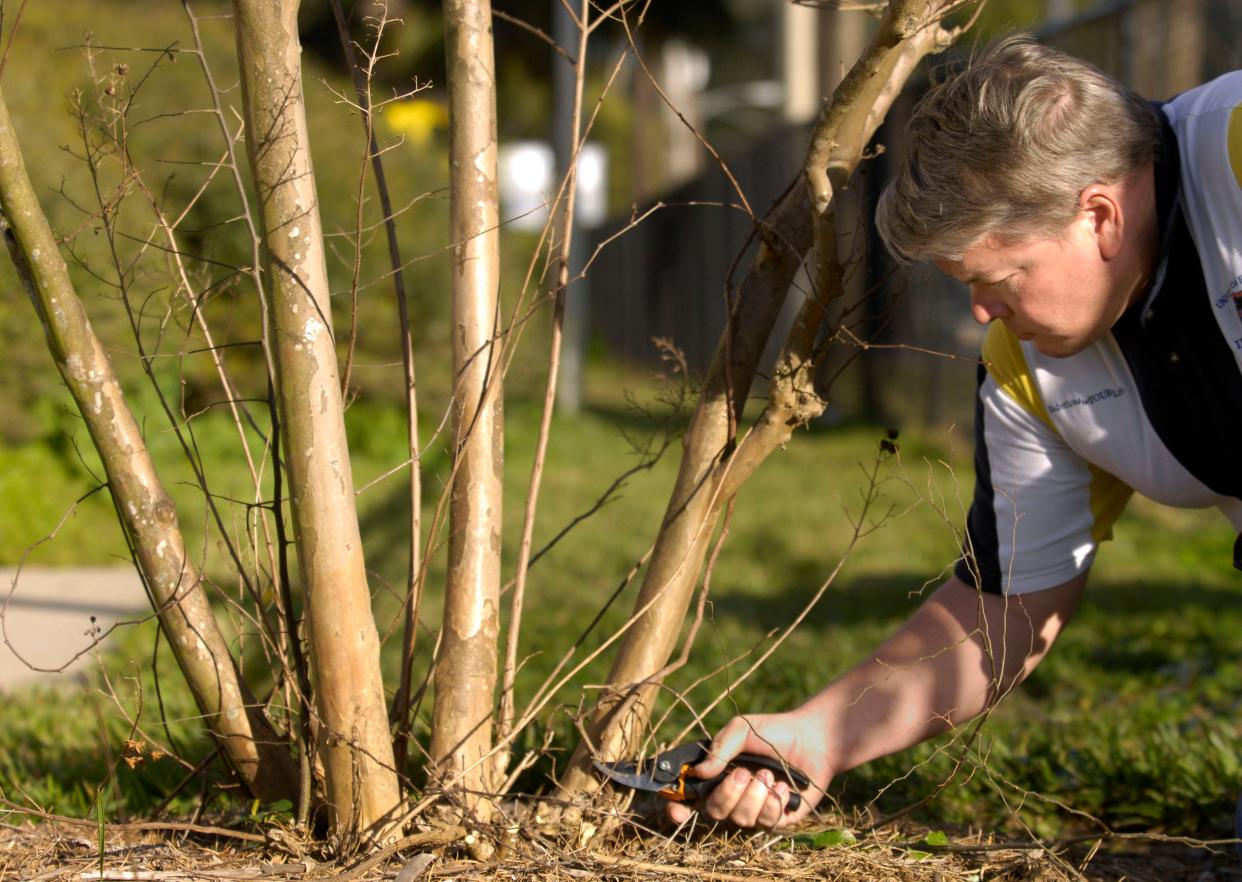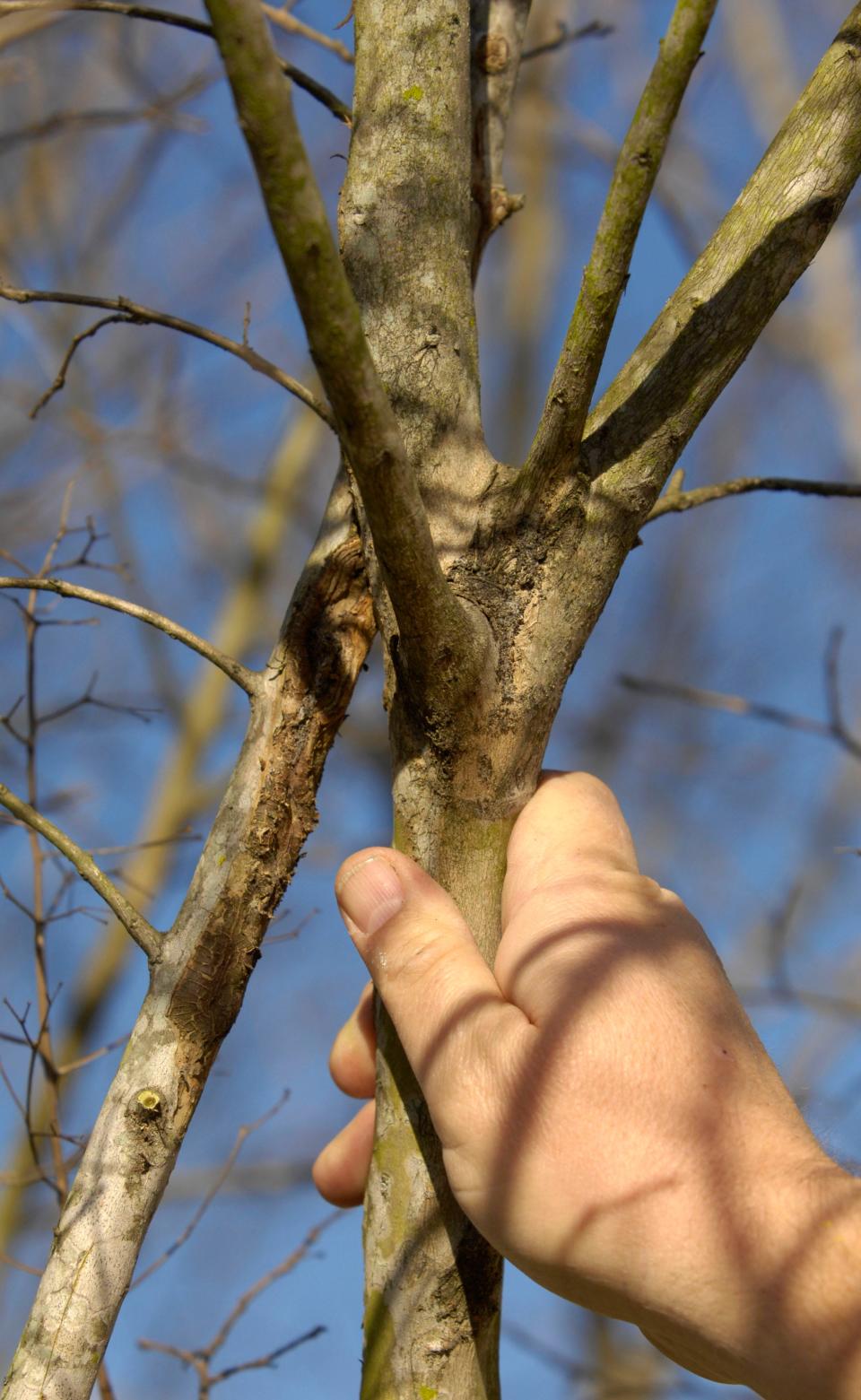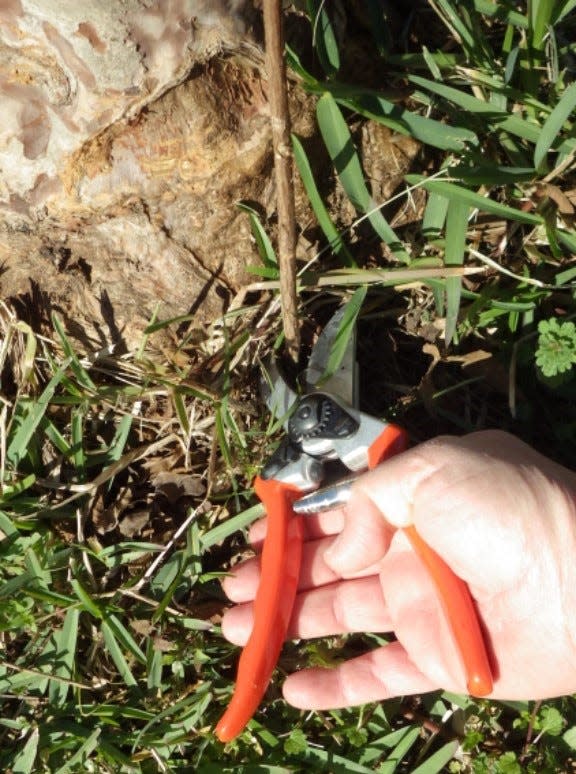Garden Help: Time to prune crape myrtle correctly

Whenever I get to the Q&A portion of a talk about pruning trees, there is always a question about how to prune crape myrtles. This time of year, those questions are even more common, as folks start thinking about pruning the crape myrtle trees in their landscape. The discussion always seems to revolve around how far back you should prune them.
Unfortunately, for many folks pruning crape myrtle is often synonymous with topping the tree.
Most arborists are not sure where the practice of topping crape myrtles started. The practice has been around a long time. The technique of severely pruning crape myrtles has even gotten a name. The term “crape murder” has often been attributed to originating from master gardeners upset with the practice, but according to Southern Living Magazine, the term was first used in a 1997 article written about the hard pruning practice.
Many arborists wonder where the practice of severely pruning (topping) started. Perhaps it was done after someone observed trees in Europe being pruned with the pollarding method. Perhaps it was someone that needed to reduce the height of the tree because it got too tall. What benefits could there be for the tree? While the benefits of crape myrtle topping cannot be found, the harm it does to trees well known.

• The heavy pruning disfigures the profile to where the tree no longer looks like a tree.
• It creates large scars that are visible for several years.
• The blooms after topping are produced on thin vigorous growth that cannot support the weight of the bloom causing it to droop down.
• It creates more maintenance on an otherwise low maintenance tree.
In the past, it was true that you pruned crape myrtles to reduce powdery mildew infestations. With today’s resistant cultivars, crape myrtles require very little pruning. In fact, a crape myrtle planted in full sun with plenty of space to grow needs little to no pruning at all.
The reason most often used for topping crape myrtles is that they have gotten too tall. The solution is simple. There are over 1,200 varieties of crape myrtle with mature heights ranging from 2 feet to 40 feet. All you need to do is purchase the variety of crape myrtle that meets your height requirement. To look at the various varieties and sizes, go to: https://edis.ifas.ufl.edu/pdf/MG/MG26600.pdf.

Another reason given for topping crape myrtle has been that the topped trees bloom more. Recent research from Edward Gilman and Gary Knox at the University of Florida has demonstrated that the number of crape myrtle blooms decrease in direct correlation to the size of the branch removed. In other words, the larger the branch removed, the fewer the blooms.
However, blooms on pruned trees were larger than blooms on un-pruned trees. To receive the benefit of larger flowers from pruning, prune just pencil sized branches without jeopardizing overall tree health caused by topping the tree
If you find yourself in the position to prune crape myrtles, here are a few simple steps to follow.
• First, prune sucker sprouts and basal sprouts. If left to grow, these sprouts may form woody stems that eventually compete with existing main stems.
• Second, prune any rubbing or crossing branches, as well as dead branches. This may include branches that are crossing through the canopy from one side to another. As always, make the pruning cuts at the branch collar.
• Third (this one is optional), tip prune the branches to remove spent flower buds. This is also called pencil pruning because the branches removed are no thicker than a pencil. This type of pruning is the most labor intensive, but it also results in a more aesthetically attractive tree.
The best way to avoid over-pruning crape myrtles is to choose the correct cultivar that matches the location where you wish to put it. For more information on pruning refer to: https://edis.ifas.ufl.edu/pdf/EP/EP39900.pdf.
Larry Figart is an urban forestry extension agent from the University of Florida/IFAS.
This article originally appeared on Florida Times-Union: Garden Help: Time to prune crape myrtle correctly

